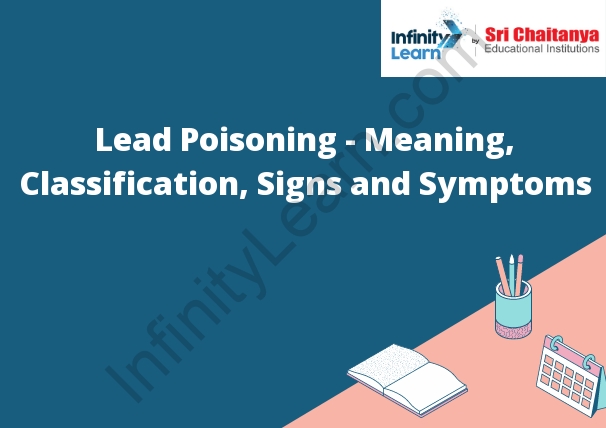Table of Contents
Plumbism Meaning
The term plumbism is used to describe the health condition that is caused by excessive exposure to lead. Lead is a toxic metal that can cause a variety of health problems, including damage to the brain, kidneys, and nervous system. Symptoms of plumbism include headaches, dizziness, and nausea. In extreme cases, lead poisoning can cause seizures, coma, and death. Lead is particularly dangerous for children, who can suffer from delayed development, learning difficulties, and behavioral problems.

Reason for Plumbism Disease
Lead poisoning, also known as plumbism, is a type of metal poisoning caused by lead. Symptoms may include abdominal pain, constipation, headaches, irritability, memory problems, metallic taste, nausea, and vomiting. Lead is a toxic metal that can cause permanent damage to the brain, kidneys, and nerves. It can also cause anemia and increase the risk of cancer.
Classification of Plumbism
Lead poisoning, also known as plumbism, is a type of metal poisoning caused by lead. Symptoms may include abdominal pain, constipation, headaches, irritability, memory problems, metallic taste, nausea, vomiting, and weakness. Lead is a neurotoxin that interferes with the development of the nervous system. It can also cause anemia and high blood pressure.
Signs and Symptoms
- Lead can enter the body by inhaling lead-contaminated dust or by ingesting lead-contaminated soil or paint chips. People working with lead or lead alloys are exposed to lead by inhalation of lead fumes and dust.
- Usually, the amount of lead in air, water, and soil is not enough to be harmful. However, exposure to high levels of lead can cause serious health problems.
- Exposure to lead can affect nearly every system in the body. Lead poisoning occurs when lead builds up in the body, often over months or years. Even small amounts of lead can cause serious health problems.
- Small children and pregnant women are at the most risk because the physical and behavioral effects of lead exposure can last a lifetime.
- Lead is particularly harmful to children because their growing bodies absorb more lead than adults do, and their brains and nervous systems are more sensitive to the damaging effects of lead. Children with high lead levels can suffer from: Lead can cause serious health problems for pregnant women and their babies.
- Exposure to lead can cause miscarriage, premature birth, low birth weight, and developmental delays. During pregnancy, lead also crosses the placenta and can damage the developing brain of the fetus.
- A pregnant woman with high levels of lead in her blood may suffer from high blood pressure. Children with lead poisoning can have learning problems, behavior problems, and problems with hearing.
- These problems might not be recognized as being caused by lead poisoning because they happen gradually.Childhood Lead Poisoning Prevention Branch.
- The severity of symptoms depends on the amount of lead in the person’s body and how long they were exposed to lead. Lead poisoning is a preventable disease. Lead can enter the body by inhaling lead-contaminated dust or by ingesting lead-contaminated soil or paint chips.
Other sign and symptoms are:
- stiffness or tightness in muscles
- weakness in muscles
- poor posture
- tremors or involuntary movements
- problems with swallowing or eating
- problems with speech or communication
- seizures.
Explain in detail :
Lead poisoning occurs when lead accumulates in the body, usually over a period of months or years. Lead is a highly toxic metal that can damage the nervous system, kidneys, and red blood cells. Symptoms of lead poisoning include abdominal pain, constipation, headaches, irritability, and loss of appetite. In severe cases, lead poisoning can cause coma and death. There is no safe level of lead exposure, and even low levels of lead can cause health problems. Lead poisoning is a serious public health problem, particularly in developing countries. Lead used in a variety of products, including paint, pipes, and also in gasoline. It can also found in dust, soil, and water. People are exposed to lead through inhalation, ingestion, or skin contact. Lead poisoning is preventable.









